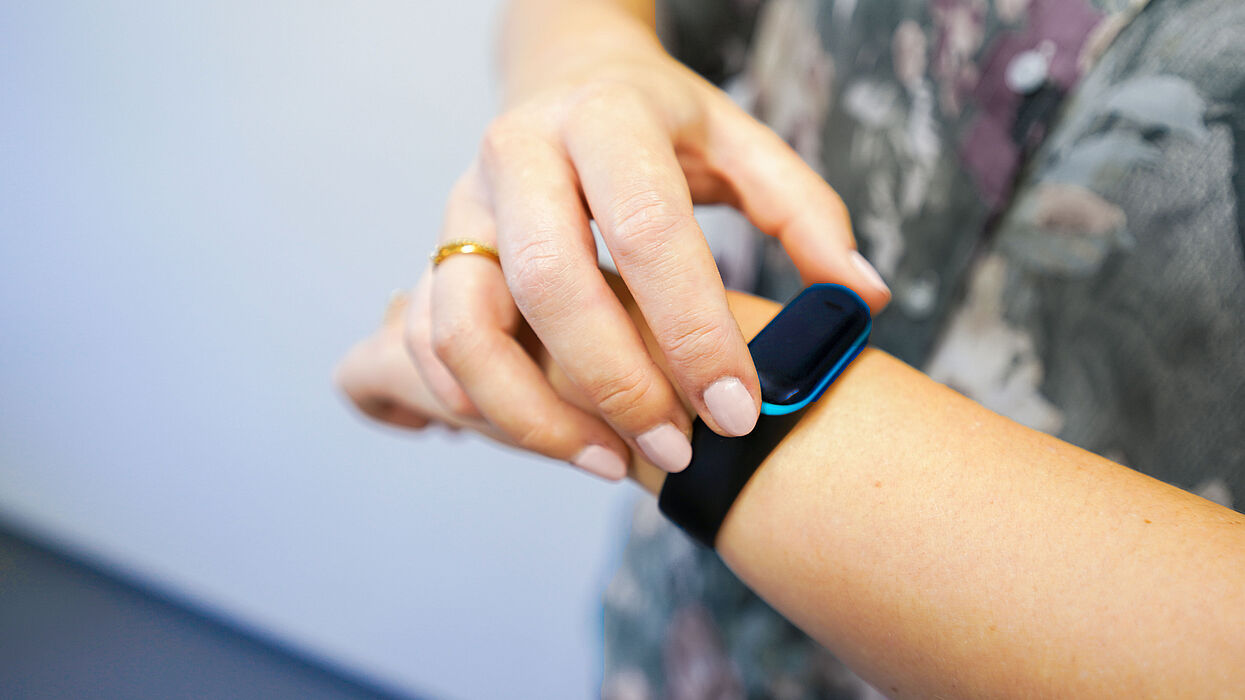Researchers at Paderborn University receive Research Award
Epilepsy is a neurological disease affecting more than 50 million people across the world. The main symptoms include severe seizures that often result in loss of consciousness and injuries – and in some cases, even death. Emergency medication and safety precautions are available, but using them is made significantly more difficult by the inability to predict seizures. Researchers at Paderborn University are therefore working on an innovative situation for a device worn on the wrist (a ‘wearable’) that offers predictions in real time. This has now won them the university’s Research Award.
Current methods have disadvantages
‘Uncertainty regarding when the next seizure will occur is one of the most challenging aspects of the disease, according to epilepsy sufferers and their carers’, explains Professor Claus Reinsberger, neurologist and head of the Institute of Sports Medicine at Paderborn University. An effective real-time prediction system could save lives by improving treatment strategies and even preventing seizures in the future. Scientific work has already been undertaken examining a variety of methods, but these generally have significant disadvantages: ‘Current systems are generally based on invasive electroencephalography (EEG), which involves small devices being implanted in the patient’s brain. Recent studies show that many users suffer from major side effects. This means that EEG is not really suitable for widespread use among the general population, especially children’, Reinsberger adds.
New approach offers better quality of life for millions of people
Inexpensive devices that are easy to use and wear and simultaneously record a range of data from the autonomic nervous system (ANS) such as heart rate, perspiration activity and skin temperature are promising and could improve quality of life for millions of people. ‘Predicting seizures using wearables is an emerging field that has only recently been scientifically proven to be practicable. However, these technologies are limited to offline use. This means that as it currently stands, there is no solution able to predict seizures in real time and thus offer the potential for appropriate medical treatment to be administered’, says Dr. Tanuj Hasija of the Department of Electrical Engineering and Information Technology, who is running the project together with Reinsberger.
This is something that the Paderborn researchers are seeking to change. To achieve this, they are developing an algorithm and a platform prototype. This means that live data will be recorded from the wearable, processed by the algorithm, and will trigger an alarm if there is an increased likelihood of a seizure. Boston Children's Hospital and Harvard Medical School are supporting the project.
Using multimodal learning with explainable artificial intelligence
One major hurdle is finding the biomarkers that differentiate between what are known as the interictal and preictal periods (between seizures or shortly before a seizure). ‘Current offline processes for predicting seizures either rely on preictal biomarkers from a single function of the autonomic nervous system or use entirely data-driven approaches, i.e. what are essentially extremely complex black boxes without interpretable explanations’, Hasija notes. However, the preliminary work conducted by researchers has shown that preictal changes are linked with multiple different ANS functions. The combined values could therefore serve a reliable biomarker for predicting seizures.
Paderborn’s researchers are using explainable artificial intelligence to make the algorithm’s workings more comprehensible for end users and their carers. The prediction algorithm is expected to learn from various medical modalities at once, as well as providing explanations for its predictions. For example, it decides that there is a high probability of a seizure due to an unusual heart rate combined with high perspiration activity that is not related to factors such as physical exertion.
There are challenges in terms of the wide range of ANS signals involved for different people and types of seizures. ‘Nevertheless, successful real-time seizure prediction for even a fraction of patients would lead to a paradigm shift in epilepsy treatment. Furthermore, the combination of automated learning based on various data sources and explainable artificial intelligence is a unique approach that offers potential for reliable technology and a better understanding of seizure-related changes, and thus opportunities for new seizure prediction biomarkers’, the two researchers agree. They plan to make their findings available to the public, including to support future studies.



